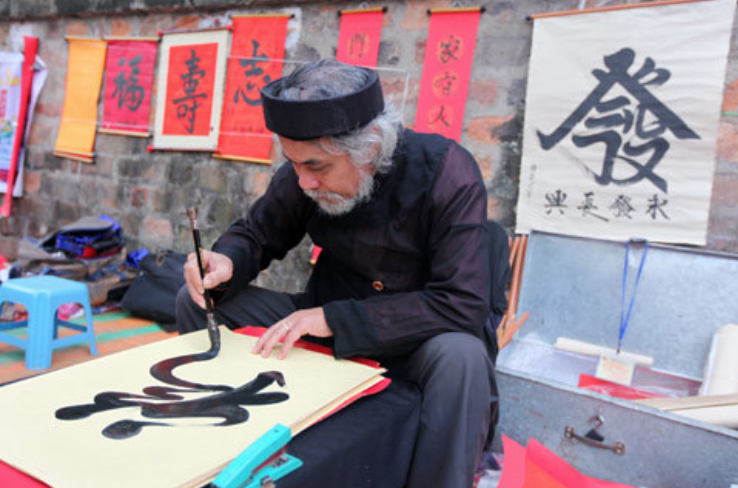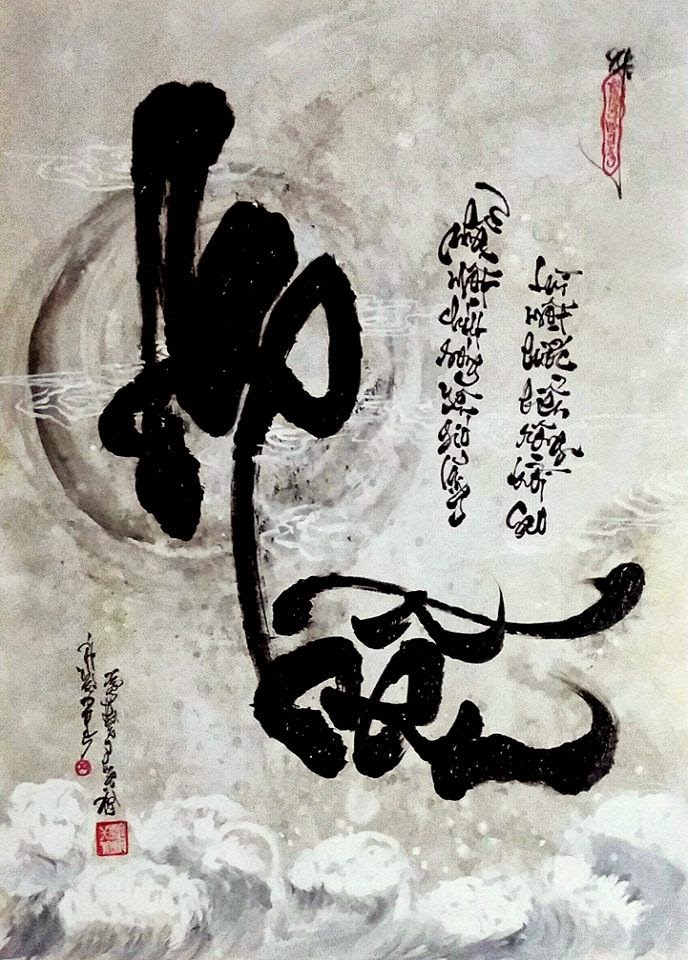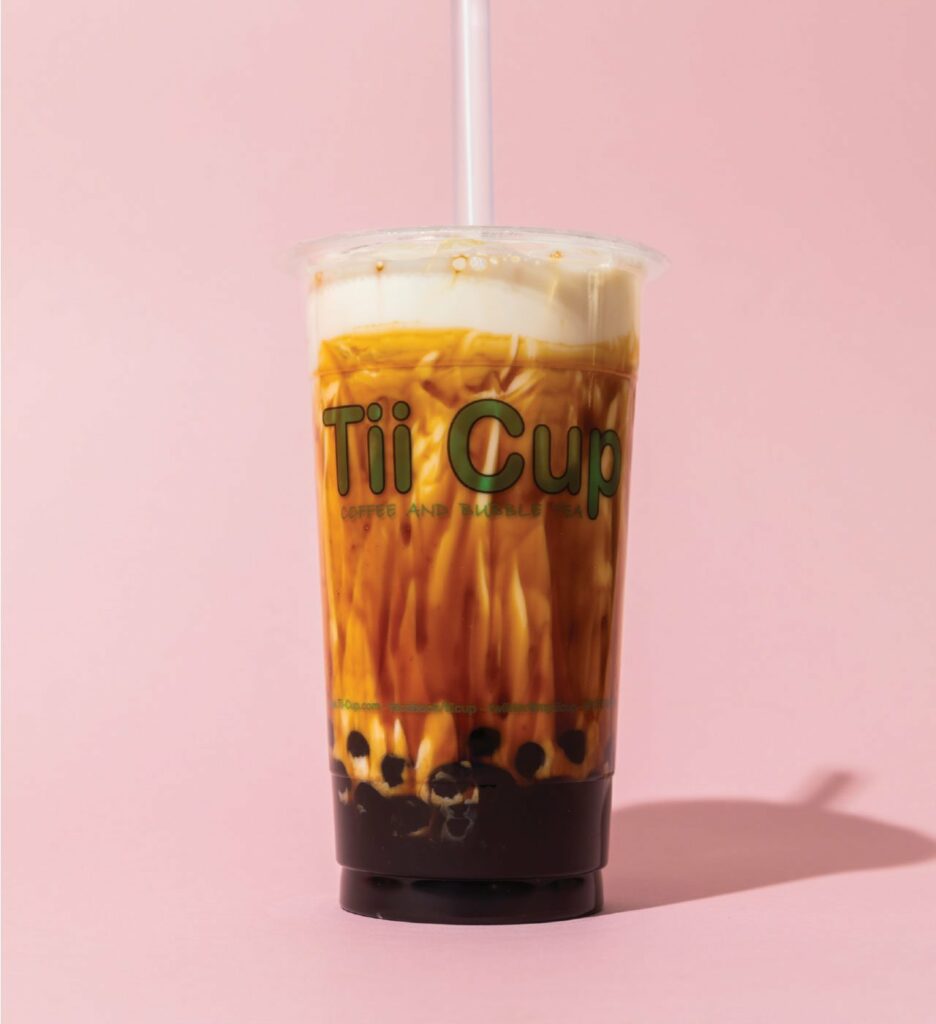Thu Phap, or calligraphy has a long history in Vietnam. In the past Vietnamese used Chu Nom or Chinese characters to represent Vietnamese words. Chu Nom is very complex and is not widely used today. Vietnamese calligraphy is the perfect example of multicultural artistry. The Vietnamese masterfully write latin letters with a brush and ink, bold and thin lines creating a visually stunning art the highlights the beauty of Vietnamese culture. Vietnamese calligraphy was strongly influenced by Chinese calligraphy. During the Ly dynasty the style of writing was very similar to that of China’s Tang dynasty (618-907), and during the Tran dynasty the style was similar to China’s Song (960-1279), and Yuan (1271-1368) dynasties. In the late Le dynasty Vietnam created its own unique style called Nam tu or Southern Script. This script was used for bureaucracy only but then became popular for all writing purposes.
During the Free Poetry Movements Chữ quốc ngữ became popular, creating a new form of art. Thư Pháp embodies the essence of Vietnams rich cultural heritage, evolving into a distinct and revered tradition. Vietnamese calligraphy is not only an artistic practice, it is also a spiritual one. Thư Pháp is about the connection between the artist, the ink, the paper and the word to be written, it’s a balance of spirit and art in perfect harmony. Vietnamese calligraphy holds great cultural and spiritual significance. The beautiful art adorns temples, shrines, and historical monuments, connecting the past and the present. Vietnamese people hold lots of respect for calligraphers in Vietnamese society.

~Photo Credit-VNonline/VietNamNet

Photo Credit- Wikipedia
Today Vietnamese calligraphers use many different materials to write on, wood, glass, and metal can all be used to write Thư Pháp. Sometimes people may even be so inspired by the calligraphy they get calligraphy tattooed on their bodies. This art form has evolved alongside spirituality in Vietnam, making it a profound and sacred practice that is uniquely Vietnamese.
Reference: https://vietnamnet.vn/en/calligraphy-in-vietnam-554557.html https://en.wikipedia.org/wiki/Vietnamese_calligraphy

